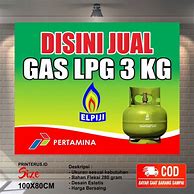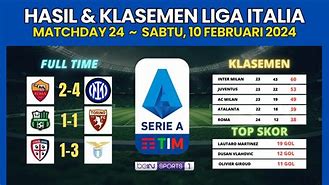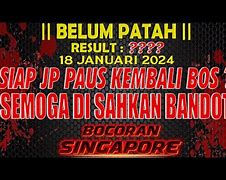
Putting Everything Together
By adding this slot machine to our scene, we can check if everything looks good:
After we state import "slotmachine", we can add the component. We anchor it in the center of the scene and specify the default width and height for the items and reels. As we didn't set a specific height for our symbols, the default values are used for all of them. When you hit play, this already look quite good. But at a closer look, the fixed height allows blank areas above or below the slot machine.
The slot machine is displayed correctly, but the fixed height might lead to blank areas.
Let's correct that! And while we're at it, we can also bring everything to life by adding a handler to the spinEnded signal and implementing the startSlotMachine() function.
We start with aligning the whole slot machine below the top bar. But the topbar image also includes a shadow at the bottom. So we move the slot machine 10px upwards to let the topbar and the slotmachine overlap a bit. Because the top bar is placed on top of the slot machine, it casts its shadow upon it. The same applies to the bottom bar. Only that in this case, the height of the slot machine is set accordingly to let it overlap with the bottom bar.
After setting a dynamic height for the slot machine based on the available space, we also calculate the width and height of the symbols accordingly. And as the last step we also scale the spin velocity along with the item height. If we didn't set a dynamic movement velocity, a slot machine with smaller symbols would appear faster.
For the startSlotMachine() function, we only execute a new spin if the player has enough credits and the slot machine is not currently running. We also set bottomBar.startActive = true to switch the image for the button and prevent changes to the bet amount. We then reduce the player credits and start a new spin. To stop the slot machine, we pass a random interval between 500 and 1000 ms to the spin() function. The slot machine automatically stops after that time has passed and the spinEnded signal is fired.
After every spin, we deactivate the start button again and restart the slot machine if we're on autoplay.
If you run the game at this point, you can already watch the symbols line up and your credits decline for every spin. I know what you are thinking now: "What? I got three captains in a row and didn't win anything?!", but relax, we'll take care of that now!
Some Minor Improvements
As you can see, the game is quite cool by now. But there are still some things we can work on. In terms of animations, it would be nice to see the player credits increase and decrease fluently. For this purpose, you can just add a Behavior to the scene, that animates the credit amount whenever it is changed.
As of now, whenever we reduce the credit amount to start the slot machine, or when we increase it in case of a win, we can watch the amount change over time. We base the duration for this animation on the current bet amount. The animations for a higher bet, that also lead to higher wins, will take longer. The animation duration in our case spans from 200 ms to 1000 ms for the bet amounts of 4 to 20.
Another cool thing would be to add some additional randomness by changing the delay time for stopping each reel. Per default, the slot machine stops each of its reels 250 ms after the previous one. The property reelStopDelay lets us change this value. If we choose a random value whenever a new spin is started, our slot machine stops its reels with a random delay.
If you want to execute some code every time the slot machine starts a spin, one possibility is to use the spinStarted signal of the slot machine. We use this signal to set a random delay for every spin. Another possibility would be to change the reelStopDelay property within the startSlotMachine() function of our scene.
This was the last feature we cover in this tutorial, but feel free to add some improvements yourself!
In case you need some suggestions for additional features, this is what you can do:
Also visit Felgo Games Examples and Demos to gain more information about game creation with Felgo and to see the source code of existing apps in the app stores.
If you are interested in the full source code of this demo game, see Flask of Rum - Slot Game.
Congratulations, you completed the tutorial and created your own slot game!
Belanja di App banyak untungnya:
Buttons, Signals and the Bottom Bar
The bottom bar is very similar to the top bar in terms of the basic principles for aligning and sizing the elements. But in contrast to the top bar, a few additional features are needed:
Now let's add the BottomBar.qml file to our qml folder and fill it with code.
We again only set a fixed height and add a background image that fills the whole bar. The start- and auto-buttons are quite similar to each other. They define an Image that is aligned at the right or the left side of the bar and include some additional features. With the line source: bottomBar.startActive ? "../assets/ButtonStartActive.png" : "../assets/ButtonStart.png", the start-button shows a different image based on the startActive property. Also, when the MouseArea detects a click, we trigger the matching signal. For the auto-button, we use the corresponding properties and signals in the same way.
The buttons to control the bet amount are horizontally centered within the bottom bar and aligned next to each other. For this purpose, we use the Row component, that places all of its child elements in a horizontal row. We can then set the position of the Row component within the bar without worrying about the horizontal alignment of the buttons themselves. For the buttons, we only define an Image that is vertically centered and contains a MouseArea that triggers the correct signal.
That looks like a lot of code, but it's mainly for displaying all the elements correctly and for listening to the events and triggering the signals.
Model, Delegate and the Slot Machine
We want to create a custom slot machine based on the configuration we just added. As mentioned before, the SlotMachine component helps us to easily set up a slot machine. The main part to get a SlotMachine to work is to specify its model and delegate properties.
As we use the SlotMachineModel to set the data for our slot machine, we can move on to defining the appearance of our symbols. Create a new folder slotmachine in your qml directory and add the following Symbol.qml definition.
qml/slotmachine/Symbol.qml:
The symbol item is quite simple: It contains an Image and allows to set the image source using a property alias. We fill the whole item with the Image and add a margin at the top and the bottom.
Note: We do not set a fixed width for the item at this point. This is because we want to set the total size of the slot machine with the symbols based on the available screen size. To be able to do that, we don't specify a width and height for the items initially. The SlotMachine component then automatically sets the item size, if we configure some properties for the default width and height of the items.
As we now have our model and delegate ready, we can create the slot machine in a new file qml/slotmachine/FlaskOfRumMachine.qml.
qml/slotmachine/FlaskOfRumMachine.qml:
The line import "../config" allows us to use our configuration object in this file. But we do not need to import our Symbol QML item, because it is located in the same folder with our FlaskOfRumMachine component. We then base our custom slot machine on the SlotMachine component and set it up to display three rows and five reels. For the model, we can simply pass our singleton configuration object. The slot machine then creates the symbol items, that are defined by the delegate property, with the data of our model. Within the delegate, you can use some special properties to access the data of the SlotMachineModel you created:
After the model and delegate definitions, we also add two images. One that fills the slot machine with a background, another shows white lines as a border between the reels. This image is placed above the background and the created symbols by setting the z property.
Adding the Bars to the Scene
I am sure that at this point, you are eager to see both the top and the bottom bar in action. Just add both of them to the main scene and we can see how it looks like.
The two bars are quickly added with just a few lines. Because we prepared the bars to work with any width we want, we can set the width to the actual width of the game window. They then use the whole screen width on every device. For the bottom bar, we also already link the signals to the handler functions, that we added in our scene. Most of the functions can already be implemented:
All of the functions that change the bet amount immediately return when the slot machine is currently running. That's because we want to prevent any changes in the bet amount during a slot machine run. We use the startActive property of the bottom bar for this check. When we start the slot machine, we will activate the start-button and thus also disable bet changes.
That's all for now! You can hit run, play around with the buttons and look at the awesome bars, that always fit the screen!
Displaying a Winning Line
The implementation of the winning lines is the most complex part of this tutorial so be sure to get yourself some coffee and activate your brain cells! ;-)
Well, to be honest, it is not that hard to define the positions of the slot machine, that are part of the line, or to check if there are matching symbols on that positions. The part that is a bit tricky, is how to show the user that he won on a line, how much he has won, and which symbols on that line are responsible for the win.
It is possible to change the symbols in the slot machine to display them as winners, but all the changes of a symbol within the slot machine may also affects the slot machine itself. This is especially problematic if you change the width or height of an item within the slot machine, as all the animations and the positioning of the symbols are based on the assumption that all the items are the same size. In addition, we want to draw the winning line above the whole slot machine component, but display the symbols that won as a part of the line.
Each winning line is displayed above the slot machine and contains the winning symbols and the win amount.
That is why we won't make any changes to the slot machine itself. We are going to show the line above the slot machine and dynamically draw the symbols that make up the line whenever a win occurs. And to top all of that, the line itself and the symbols we draw, should perfectly fit above the slot machine, that has a different size on every device.
Your brain hurts already? Don't be afraid, we are going to add all of this step-by-step until everything works the way we want it to. There are two main problems to solve:
The first question couldn't be answered easier: We already created the images for each line in a way that perfectly fits the slot machine. This is something we took care of during the design of the game. If the image of a line has the same height as the slot machine, the line is perfectly aligned and fits the rows and columns of the slot machine.
Each line image covers the whole slot machine height.
As for the second question, we will take several steps to realize the dynamic creation of the winning symbols:
Let us skip the validation step for now and focus on step three. To create the basic QML structure to correctly display a line, we add a new file WinningLine.qml to our qml/slotmachine folder.
qml/slotmachine/WinningLine.qml:
The item for a winning line is configured to automatically fill the size of its parent item. Because of this setup, we can add all the different lines to one container item, that matches the height of the slot machine. Every winning-line item then also perfectly fits above slot machine.
We then declare some properties, that allow us to configure each line or memorize data for internal usage. The internal properties all start with two underscores to avoid misunderstandings.
We then only add two elements to our line. The line image, that we configure for each line, and a special area that we use as the container item for the line symbols we create. The reason for this item is the requirement of a container that matches the size of the slot machine. The line item itself only matches the slot machines height, but not its width. We want to position the text for the win amount and the line symbols correctly above the slot machine, which is why we need this container. The win amount is already part of the container from the beginning. The symbols are then added whenever the drawLineSymbols() function is called.
We place the line symbols relative to the symbol area, which matches the slot machine size.
The drawLineSymbols() function takes care of the following tasks:
The dynamic creation of objects is possible with the Qt.createComponent command. We use this command to load the LineSymbol.qml component, which we are going to create at the next step of this tutorial. We then create each object by passing the property configuration and the target container to the createObject method of the component we loaded. Of course, all the properties that we set for the line-symbols are also going to be part of LineSymbol QML component. Let us create the component by adding a new file LineSymbol.qml to the slotmachine folder.
qml/slotmachine/LineSymbol.qml:
Luckily, nothing really complex happens within this component. We define a Rectangle, to set the a background, and add an Image to show the symbol image. The image also contains a Rectangle to realize a colored border. The color property defines the color for both the background and the border rectangle. To display the correct image, we add a type property and then use our symbol configuration to get the image source for the desired symbol type. That's all the magic. With this, you already finished the code to display a winning line.
Situs Slot Gacor: Rahasia Menemukan Slot Online dengan Peluang Kemenangan Tinggi
Di dunia perjudian online, istilah “slot gacor” belakangan ini menjadi sangat populer di kalangan pemain. Istilah ini merujuk pada slot online yang dianggap memiliki peluang kemenangan lebih tinggi daripada slot lainnya. Bagi banyak pemain, menemukan situs slot yang gacor merupakan langkah penting untuk meraih kemenangan besar. Artikel ini akan membahas tentang situs slot gacor, cara mengenali slot yang sering memberikan kemenangan, dan strategi untuk meningkatkan peluang menang Anda.
Istilah "gacor" berasal dari bahasa gaul yang berarti "berisik" atau "aktif." Dalam konteks slot online, slot gacor adalah permainan slot yang sering memberikan kemenangan, baik dalam bentuk payout kecil secara konsisten maupun jackpot besar. Banyak pemain percaya bahwa slot yang gacor lebih sering memberikan hasil positif, terutama pada jam-jam tertentu. Meskipun semua slot menggunakan teknologi Random Number Generator (RNG) yang memastikan hasil acak, ada beberapa faktor yang dapat membuat slot tertentu tampak lebih "gacor" di mata pemain.
Beberapa pemain berpengalaman mengatakan bahwa slot yang baru diluncurkan atau yang jarang dimainkan cenderung lebih sering memberikan kemenangan sebagai cara untuk menarik pemain baru. Namun, penting untuk diingat bahwa tidak ada jaminan 100% bahwa Anda akan menang, karena slot pada dasarnya adalah permainan yang didasarkan pada keberuntungan.
Strategi Bermain di Slot Gacor agar Lebih Untung
Meskipun slot didasarkan pada keberuntungan, ada beberapa tips dan strategi yang dapat Anda terapkan untuk meningkatkan peluang menang:
1. Pilih Slot dengan RTP dan Volatilitas yang Sesuai Slot dengan RTP tinggi (di atas 96%) lebih mungkin memberikan kemenangan dalam jangka panjang. Selain itu, pilih slot dengan volatilitas yang sesuai dengan gaya bermain Anda. Slot dengan volatilitas rendah cenderung memberikan kemenangan lebih sering tetapi dengan nilai kecil, sedangkan slot dengan volatilitas tinggi memberikan kemenangan besar namun jarang.
2. Manfaatkan Bonus dan Free Spins Banyak situs slot gacor menawarkan bonus deposit, free spins, dan promosi lainnya yang dapat meningkatkan peluang Anda untuk menang. Sebelum mengklaim bonus, pastikan untuk membaca syarat dan ketentuan yang berlaku, terutama terkait wagering requirements.
3. Bermain pada Jam-Jam Tertentu Beberapa pemain percaya bahwa slot gacor lebih aktif pada jam-jam tertentu, seperti malam hari atau awal pagi. Meskipun tidak ada bukti ilmiah yang mendukung teori ini, mencoba bermain pada waktu yang berbeda bisa jadi menarik dan mungkin saja memberikan hasil yang lebih baik.
4. Coba Mode Demo Terlebih Dahulu Sebelum bertaruh dengan uang sungguhan, gunakan mode demo untuk memahami cara kerja permainan. Ini memungkinkan Anda berlatih dan mempelajari fitur slot tanpa risiko kehilangan uang. Setelah merasa cukup percaya diri, barulah beralih ke mode taruhan nyata.
5. Tetapkan Batas dan Bermain dengan Bijak Tetapkan anggaran sebelum mulai bermain dan patuhi batas tersebut. Jangan tergoda untuk terus bermain demi mengejar kekalahan, karena ini bisa berujung pada kerugian yang lebih besar. Bermainlah dengan santai dan anggap slot sebagai hiburan, bukan sebagai sumber pendapatan utama.
Now it's easier to top-up your OVO balance, Top-up OVO can be done using Danamon Virtual Account. Always use Danamon e-Channel for convenient and secure banking transactions, anytime and anywhere.
ATM Tutorial 1. Insert your ATM card and your Bank Danamon PIN 2. Select Payment 3. Select Others 4. Select Virtual Account 5. Input 7390 + your phone number: 7390 08xx xxxx xxxx 6. Input nominal top-up 7. Follow the instruction to complete the transaction
Minimum Nominal for Top Up Transaction : Rp.10.000 Maximum Nominal for Top Up Transaction : Rp.10.000.000 (maximum daily balance is 10.000.000 and maximum monthly balance is 20.000.000)
This tutorial guides you step-by-step on the way to create the slot game Flask of Rum.
When you enter the world of casinos and take a look at the available games, one of the most popular type are the slot games. Even in online casinos, that you can access through the Internet or by mobile apps, these games definitely belong to the top. Just have a look at well-known slot game producers like Slotomania, Slotpark or Greentube to see them in action!
A typical design of a slot machine. The Book of Ra is a classic slot game example, but all different kinds of games are available.
Though the amount of slot games out there is incredible, most of them share the same basic game mechanics:
That already sounds fun, right? But most of the games have some specials that make them even more interesting: For example, The Book of Ra is not only the game title but also a symbol on the reels with a special power. It can take the place of any other symbol in the game to form a line of matching symbols. Such wildcard symbols already boost the chances to win, but that's not all. If the player manages to get three or more books into one line, he receives ten free games with some twists that further increase the chances to win. So like the real explorers of Egypt dungeons, the players who find the Book of Ra are extremely lucky and can expect big win amounts.
Most slot machines have special symbols that boost your chances to win.
Wildcard symbols, symbols that give free spins or even symbols that start mini-games are a major fun factor and occur in most of the modern slot games. In this tutorial, we will make a pirate themed slot game similar to such games! And I am sure you know what a pirates greatest treasure is ... correct, a Flask of Rum! This is what the final version is going to look like, yarrrrr!
You are going to make this awesome slot machine.
Setting Up the Project
The first step is to create a new empty project in Qt Creator. We want the game to be in landscape orientation, so make sure to select this mode during the project setup. When you're done, just add the downloaded images to the assets folder of your project. They should also appear in the Other files\assets directory of the project tree in Qt Creator. Please take care not to add an additional subdirectory that might be created when you unpack the resources archive.
This is how your project tree should look like.
If you are all set, we can finally start to add some code!
First, we want to create the basic game layout that fills the space around the actual slot machine in the middle of the screen. It includes:
The basic game layout consists of a bar at the top, one at the bottom and a beautiful dark red background.
Let us start with a simple game scene, that only defines a few properties and a colored rectangle for our red background. Just replace the current Main.qml file in your qml folder with the following implementation.
With these few lines, we set up our game window to be 960 x 640 px. This is the default window size when you play the game on your computer. On mobile devices, the game window size is different for each device.
We then add a Scene to the game window and configure it as the active scene by stating activeScene: scene. The value scene in this expression refers to the id that we set for our Scene element. The scene in this example has a logical size of 480 x 320 px. All the elements within the scene are scaled up along with the scene to match the game window size. This makes it very easy to add elements, that have a fixed position and size, without worrying about them being smaller on displays with higher resolutions.
Note: There are different scaling modes available in Felgo. The default mode fits the scene to the game window, which may leave empty areas at the side of the screen. To learn more about scaling modes, visit the tutorial How to create mobile games for different screen sizes and resolutions.
The two properties betAmount and creditAmount are global properties for handling the current bet amount and total credit amount of the game. We already set the initial values 4 and 400, so each spin of the slot machine reduces the initial credit amount of 400 by 4 credits. The last element of the scene is the rectangle, that sets our background color. We configure the rectangle to fill up the whole game window and not only the scene. This ensures that the background covers the whole screen on every device.
The top bar is a very distinct element of the scene, that contains additional items like the game logo and the credit amount. It is a good idea to create a separate QML item for such elements to keep your code clean and well structured. Create a new file TopBar.qml in your qml folder and fill it with this code:
The topbar has a height of 50 px, which matches the height of the background Image. But we do not set a fixed width for the top bar at this point. Instead, we configure the background image to fill the whole topbar, so it is possible to set any width for the topbar at a later point and the background image always covers all of it. We will use this behavior to match width of the bar with width of the game screen.
The other elements of the top bar have fixed sizes, but are not placed at a fixed point of the bar. Instead, we anchor the items relatively to the topbar or to one another. This ensures the same relative positions on any device width. For example, the logo is always vertically and horizontally centered.
The icon for the credits is a pile of gold coins that we place 4 px from the left and 8 px from the top of the bar. We then anchor the credit amount text directly to the left of the gold coins and center it vertically. By using scene.creditAmount as the text value, we display the corresponding property of our scene. Furthermore, any changes that occur in the creditAmount property are automatically applied to the text as well. This is possible due to the concept of property binding and erases any worries about keeping the text and the actual credit amount in sync.
And that kids, is how you create the top bar. ;-)
Ciri-Ciri Situs Slot Gacor yang Terpercaya
Memilih situs slot gacor yang aman dan dapat dipercaya adalah langkah pertama untuk memaksimalkan peluang Anda. Berikut adalah beberapa tanda yang menunjukkan bahwa sebuah situs layak untuk dicoba:
Lisensi Resmi: Situs slot gacor yang terpercaya selalu memiliki lisensi dari badan pengawas seperti Malta Gaming Authority atau UK Gambling Commission. Lisensi ini menunjukkan bahwa situs telah diaudit dan beroperasi sesuai dengan standar keamanan yang ketat.
RTP (Return to Player) Tinggi: Situs slot gacor umumnya menawarkan permainan dengan RTP di atas 96%. Semakin tinggi RTP, semakin besar peluang Anda untuk mendapatkan kembali sebagian besar dari taruhan Anda.
Bonus dan Promosi Menarik: Situs yang baik biasanya menawarkan bonus besar, seperti bonus selamat datang, free spins, dan cashback. Manfaatkan promosi ini untuk meningkatkan saldo Anda dan memperpanjang waktu bermain tanpa harus menambah modal.
Ulasan Positif dari Pemain: Membaca ulasan dari pemain lain adalah cara terbaik untuk menilai reputasi sebuah situs. Situs slot gacor umumnya memiliki ulasan positif terkait kecepatan penarikan, keandalan, dan kualitas layanan pelanggan.
Metode Pembayaran Cepat dan Aman: Situs yang andal selalu menyediakan berbagai metode pembayaran yang aman, termasuk e-wallet, transfer bank, dan cryptocurrency. Proses penarikan dana yang cepat menjadi indikator bahwa situs tersebut benar-benar menghargai pemainnya.























